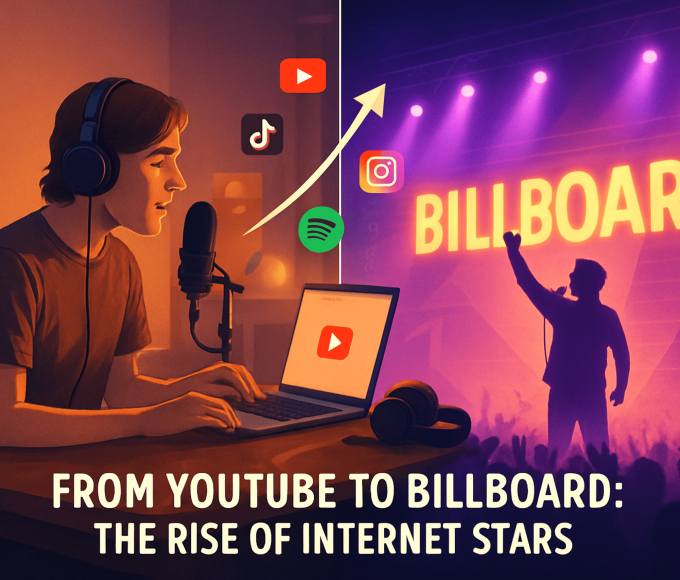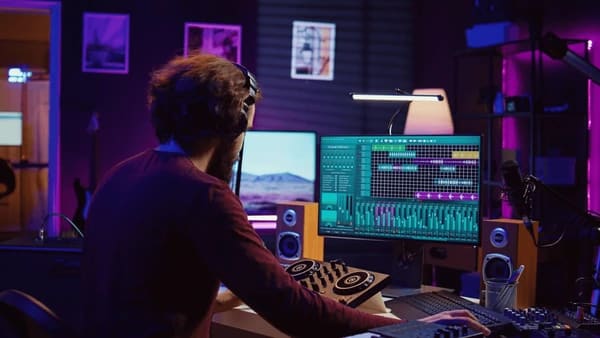Step back in time and imagine this: a torchlit courtyard on the Nile, a silent crowd, and priests who act out a god’s death and rebirth. That single scene helps answer the question, “How did theater start?” Long before spotlights and curtains, people gathered to share stories through movement, music, and masks. They did not call it “showtime.” Instead, they called it worship, harvest thanks, or royal praise. Yet, each performance carried the same spark we feel today when stage lights dim.
Moreover, in this guide, we trace that spark from ancient Egypt to mighty Rome. As you read, you will also see how ritual turned into art, how actors first spoke alone, and how stone arenas rose to hold eager fans. You will also note fun stats about the theatre. It will also feel less like a quiz and more like a lively conversation.
Ancient Egypt: Sacred Plays by the Nile
Egypt offers our first solid proof of theater-like shows. Around 2,500 BCE, people staged the Abydos Passion Play for Osiris. They also mixed chant, dance, and costume to retell the god’s tragic tale. Even then, clear roles and set actions shaped the story.
Key Facts
- When? About 4,500 years ago.
- Where? Abydos temple grounds.
- Why? Honor Osiris, guide souls, bless crops.
Stage Tricks
- Painted masks showed joy or grief.
- River barges became moving sets.
- Musicians played sistrums and drums for the mood.
Because these shows taught myth and morals, priests kept firm scripts. The crowd watched, but they also joined chants, blurring the line between actor and viewer. Thus, the earliest answer to “how did theater start?” lies in faith and shared story.
Ancient Greece: Festivals Become Formal Drama
Fast-forward two millennia. Greek farmers thank Dionysus with loud songs called dithyrambs. Soon, one brave singer, Thespis, steps out alone. He speaks as a character in 534 BCE and, as Aristotle wrote, “created acting.” From then on, how did theater start? Gains a new chapter: scripted drama.
“Tragedy rose from the leaders of the dithyramb,” wrote Aristotle in Poetics.
Why Greece Matters
- Built the first stone theaters; Athens’ arena held 15,000 fans.
- Added plot, dialogue, and stage prizes.
- Famous writers—Aeschylus, Sophocles, and Euripides—expanded their roles from one actor to three, boosting conflict and depth.
Core Features
- Masks let men play gods, heroes, and women.
- Chorus sang links between scenes and echoed public views.
- Competitions during the City Dionysia pushed writers to innovate every spring.
Because rules, prizes, and purpose-built spaces met, drama leaped from ritual to art.
Rome: Adapting Greek Genius for Big Crowds
Rome caught theater fever in 240 BCE. It borrowed Greek plots yet rewrote them for flashy taste. Romans also loved slapstick, music, and grand sets. How did theater start? For them, it also meant turning borrowed art into mass fun.
| Greek Roots | Roman Twists | Result |
| Stone hillside seats | Tall freestanding arenas | Shows move into busy cities |
| Three-actor limit | Larger casts, more musicians | Louder, faster comedies |
| Simple dressing hut | Two-story scaenae frons | Painted columns and balconies |
Notable Names
- Plautus filled the stages with goofy servants and mix-ups.
- Seneca wrote dark tragedies that were read aloud in salons.
Roman Stage Magic
- Drop curtains hid scene changes.
- Trapdoors popped gods into view.
- Awning rigs shaded 20,000 seats at the Colosseum.
Even after emperors banned drama during wars, scripts survived to guide medieval storytellers. Thus, Rome spread theater tools across Europe, keeping that first Egyptian spark alive.
Medieval Europe: Faith, Fairs, and Folk Plays
Crowds did not stop watching shows when Rome collapsed. Yet, church leaders saw many scripts as sinful. So, they pulled drama inside the sanctuary and reshaped it to teach the Bible. That move kept the flame of performance alive and broadened the question to how did theater start? In Western lands.
At first, monks sang Latin lines called quem quaeritis (“Whom do you seek?”) during Easter Mass. Soon, short scenes about the Nativity and the Passion spread. But people spoke no Latin, so the clergy moved plays into church yards and markets and used common speech. City guilds then built rolling wagons, each holding a scene like Noah’s Ark or the Crucifixion. Processions of pageant carts could last from sunrise to sunset.
“We lift the story for all to see, that the simple may share the light,” wrote an unknown York scrivener, 1430.
These dramas also came in three main shapes:
| Type of Play | Main Theme | Usual Setting |
| Mystery | Bible history | Guild wagons |
| Miracle | Lives of the Saints | Church steps |
| Morality | Allegories of virtue | Open squares |
Key Shifts
- Dialogue turned local, clear, and lively.
- Costumes mixed holy robes with rustic clothes.
- Actors were unpaid townsfolk, not priests.
With each change, the theater slipped from a strict ritual toward public fun. The stage grew bolder, and by 1350, many towns built fixed wooden platforms. Audiences paid pennies, and adapting stories became a craft. Even the Black Death could not end these shows; they paused, then roared back, proving that wherever faith met story, crowds gathered.
England’s Boom
London built The Theatre (1576) and soon the Globe. Round yards let groundlings stand near actors, while balconies held nobles. Shakespeare joined the Lord Chamberlain’s Men and wrote two plays a year. He mixed tragedy, comedy, music, duels, and dance—still grade-school friendly after 400 years.
“All the world’s a stage,” wrote Shakespeare in As You Like It. His line reminds us that theater mirrors daily life.
Moreover, across Europe, princes funded indoor courts called masques with moving scenery and colored lights. Architects, like Inigo Jones, also slid shutters to change views in seconds. Later, baroque theaters carved gilded balconies and added giant chandeliers. So, the stagecraft race sped on, with rope rigs, cloud machines, and thunder sheets.
Notable Facts
- The Globe seated around 3,000 people, yet its entire shell cost only £700.
- Italian designer Sebastiano Serlio published the first illustrated scene manual in 1545.
- Women still could not act in England until 1660; boys played Juliet and Desdemona.
By 1700, tickets, programs, and celebrity actors made theater a business. Writers also pushed social issues, shaping public taste. Thus, the Renaissance proves that once art finds paying fans, innovation never sleeps.
Today’s Stages and Screens
Fast-forward again. Now bright LEDs replace torches, and blockbuster films reach billions. Still, every movie and musical carries a line back to that first Osiris march. Knowing How Did Theater Start? Helps us see links between past and present art.
Live Theater Now
- Broadway grosses over $1.5 billion each season, drawing ten million patrons.
- Regional theaters stream shows online, letting distant fans join opening night.
- Immersive troupes like Punchdrunk let viewers roam sets and guide action.
Cinema’s role
Early filmmakers borrowed stage tricks—sets, costumes, blocking. Soon, they added close-ups, editing, and sound. Yet, movies still follow a three-act arc traced to Aristotle. Marvel films echo Greek myth as heroes face trials, hubris, and fate.
Stage and Screen Together
- Many hit films, from Les Misérables to Hamilton (live capture), began on stage.
- Theater also uses projection mapping and VR to paint worlds cheaply.
- Ticket apps and social media trailers blur promotion lines.
Director Julie Taymor says, “Theater is the rehearsal room of cinema.” Her work on The Lion King proves how puppetry and masks can wow twenty-first-century crowds.
Trend Stats
- Streaming services filmed over 60 stage productions in 2024 alone.
- Hybrid “cine-plays” saw a 25 % jump in ticket sales last year.
Why It Matters
- Live shows give shared energy, but no screen can match.
- Films spread stories to bigger global audiences.
- Both forms keep evolving, but the core is still human connection through acted tales.
So, whether you sit in a red velvet seat or watch from your couch, you join a chain that began with priests, farmers, and poets asking why seasons change and heroes fall. The torchlight may be gone, yet the glow lives on each time we gather—online or off—to see life played before us. Finally, this unbroken thread shows not only how did theater start? But also why it thrives today.
Modern Innovations: Lights, Bytes, and Borderless Stages
The last thirty years changed theater faster than any past century. LED walls, motion-capture suits, and real-time sound loops now turn bare floors into living worlds. Directors blend projection mapping with hand-painted drops, proving new tools can honor old craft.
Tech Leaps
- Digital backdrops swap scenes in one click.
- Body-tracking lights follow dancers without cues.
- Hologram cameos let legends “return” for encores.
Streaming also shrank distance. A rural school can live-cast its musical to families on three continents. Broadway’s 2024 Here Lies Love used TikTok teasers to sell 10% of tickets. Community troupes post rehearsal clips, earning patrons before opening night. As tech rises, the heart also stays human. Performers still breathe the same air as their crowd, even when a camera shares that breath worldwide.
“Technology should vanish until only the story remains,” notes designer Es Devlin. Her glowing sets prove the point.
So, this era shows that asking how did theater start? It is not dusty trivia—it guides how new gadgets serve timeless tales.
Why Theater Still Matters
Stories shape how we see ourselves. Live theater turns those stories into shared energy. Each laugh, gasp, or tear spreads from row to row and back to the stage. Even films, games, and VR rides trace rules born in ancient arenas.
- Emotional science: Studies at the University of London found that the heart rates of strangers sync during plays.
- Local impact: U.S. regional theaters add $2.3 billion to their cities each year.
- Personal growth: Teens in drama clubs score higher in empathy tests, says a 2023 UNC study.
So, while screens glow brighter, stages keep our connections bright, too. Knowing How Did Theater Start? Reminds us that every culture, tool, and trend still points back to people gathering to feel together.
Frequently Asked Questions
Is Cinema Killing Live Theater?
No. Ticket sales dipped in 2020 but topped $1.5 billion on Broadway in 2024. Both forms now boost each other through streams and film adaptations.
Can Kids Enjoy Ancient Plays?
Yes. Modern versions trim length, update language, and add music. So, schools often stage Antigone or A Midsummer Night’s Dream for all ages.
Why Do Actors Still Use Masks Today?
Masks focus movement and voice, just like in ancient Greece. Groups such as Japan’s Noh and Italy’s commedia still train with them.
How Do Small Theaters Afford New Tech?
Many rent LED walls or share gear with local colleges. Grants from arts councils also fund pilot projects.
What Is The Easiest Way To Support Live Theater?
You can see a show, share a review online, or donate the cost of a coffee. Small gestures keep the curtains rising.
Conclusion
From Osiris’s riverside rite to a streaming Broadway debut, theater has also traveled far yet stayed close to its roots. People still gather, lights still dim, and a story unfolds in real time. So the next time you sit in any audience, remember the journey and feel the same spark that first asked. How did theater start? Every age adds tools, but the aim stays clear: to explore what it means to be human—together.

















Leave a comment